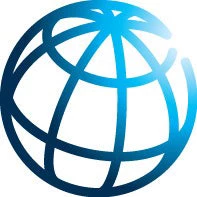Close to one third of the wealth of low-income countries comes from their “natural capital” which includes forests, protected areas, agricultural lands, energy and minerals, according to a new World Bank book launched on January 20, 2011. Countries that manage these natural assets carefully are able to move up the development ladder – investing more and more in manufactured capital, infrastructure and “intangible capital” like human skills and education, strong institutions, innovation and new technologies.
In 2005, the total economic value of natural assets was $44 trillion worldwide, or $7,000 per person on average while “intangible” capital accounted for the greatest component of total wealth – worth a massive $540 trillion worldwide in 2005.
The Changing Wealth of Nations – a follow-up publication to the 2006 book, Where is the Wealth of Nations? – extends the principles of wealth accounting to include dimensions that go beyond the standard Gross Domestic Product calculations undertaken by finance ministries. It presents, for the first time, a set of “wealth accounts” for over 150 countries for 1995, 2000, and 2005 which allows a longer-term assessment of global, regional and country performance in building wealth.
The book shows that developing countries differ sharply from developed countries in where their wealth is based. Most countries, it says, start out with a relatively high dependence on natural capital and those that progress most successfully manage their assets for the long term and reinvest in human and social capital as well as in building strong institutions and systems of governance.
Botswana – which has been a leader in Africa for transparency and carefully managing its natural resource base – increased its per capita wealth by 35 per cent between 1995 and 2005. Since the 1980s, the Government has had a Sustainable Budget Index in place to monitor how well income from mining is reinvested in the national budget.
And, through a long-established environmental accounting program, it has shown that a large share of the rents from mining is being recovered and invested in Botswana’s long-term development.


The book finds that intangible capital growth contributed close to 100% of the increase in total wealth in Sub-Saharan Africa and Eastern Europe and Central Asia from 1995 to 2005. This share was 80% in South Asia and 72% in Latin America and Caribbean.
The underlying data used for the book are now available in our Data Catalog: http://data.worldbank.org/data-catalog/wealth-of-nations. Datasets include total and per capita wealth estimates for 1995, 2000, and 2005; adjusted net savings estimates for 1970-2008; and rent estimates for various commodities and natural resources such as forests, oil, gas, coal, gold, siver, and zinc.
Related links:


Join the Conversation